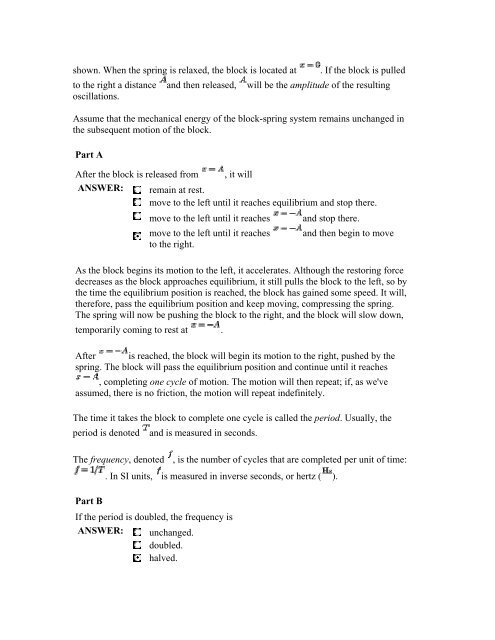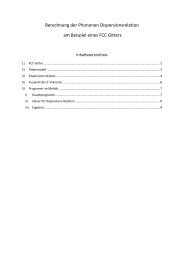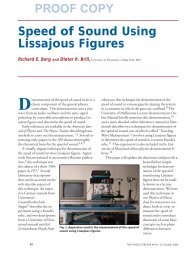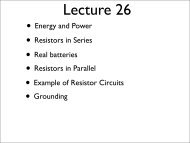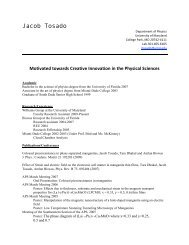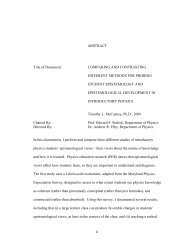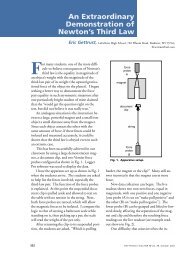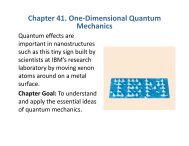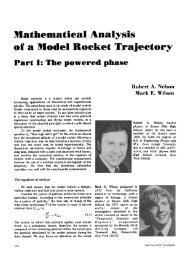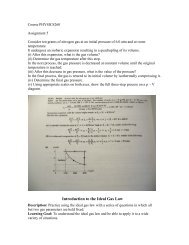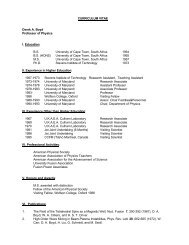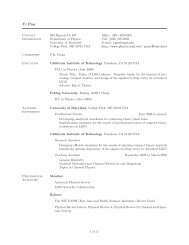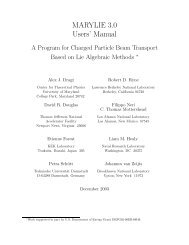Good Vibes: Introduction to Oscillations
Good Vibes: Introduction to Oscillations
Good Vibes: Introduction to Oscillations
You also want an ePaper? Increase the reach of your titles
YUMPU automatically turns print PDFs into web optimized ePapers that Google loves.
shown. When the spring is relaxed, the block is located at . If the block is pulled<br />
<strong>to</strong> the right a distance and then released, will be the amplitude of the resulting<br />
oscillations.<br />
Assume that the mechanical energy of the block-spring system remains unchanged in<br />
the subsequent motion of the block.<br />
Part A<br />
After the block is released from , it will<br />
ANSWER: remain at rest.<br />
move <strong>to</strong> the left until it reaches equilibrium and s<strong>to</strong>p there.<br />
move <strong>to</strong> the left until it reaches and s<strong>to</strong>p there.<br />
move <strong>to</strong> the left until it reaches<br />
<strong>to</strong> the right.<br />
and then begin <strong>to</strong> move<br />
As the block begins its motion <strong>to</strong> the left, it accelerates. Although the res<strong>to</strong>ring force<br />
decreases as the block approaches equilibrium, it still pulls the block <strong>to</strong> the left, so by<br />
the time the equilibrium position is reached, the block has gained some speed. It will,<br />
therefore, pass the equilibrium position and keep moving, compressing the spring.<br />
The spring will now be pushing the block <strong>to</strong> the right, and the block will slow down,<br />
temporarily coming <strong>to</strong> rest at .<br />
After is reached, the block will begin its motion <strong>to</strong> the right, pushed by the<br />
spring. The block will pass the equilibrium position and continue until it reaches<br />
, completing one cycle of motion. The motion will then repeat; if, as we've<br />
assumed, there is no friction, the motion will repeat indefinitely.<br />
The time it takes the block <strong>to</strong> complete one cycle is called the period. Usually, the<br />
period is denoted and is measured in seconds.<br />
The frequency, denoted , is the number of cycles that are completed per unit of time:<br />
Part B<br />
. In SI units, is measured in inverse seconds, or hertz ( ).<br />
If the period is doubled, the frequency is<br />
ANSWER: unchanged.<br />
doubled.<br />
halved.


